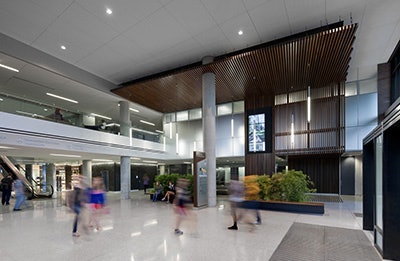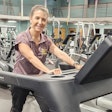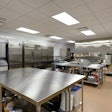The current generation attending colleges and universities across the United States is unique in its focus on health and well-being. On one hand, they are more empowered and aware of their health and fitness thanks to fitness trackers, apps, and social media influencers. At the same time, a significant portion of them struggle with mental health and physical challenges at higher rates than previous generations.
To best help this unique generation and those that will follow, colleges and universities are reimagining their student health centers. Gone are the days where these buildings were places to avoid unless students absolutely had to go there due to illness.
Today, student health centers have integrated mental health spaces, demonstration kitchens, nature access, multipurpose rooms for yoga and relaxation, social zones, cafes and much more. These facilities are becoming campus beacons rather than campus backdoors — helping reduce stigma around health and well-being and any associated personal physical or mental health challenges.
Such dynamic spaces make wellbeing a strong piece of a campus’ DNA. They also help move health and well-being services upstream, with students seeking more preventative strategies as opposed to just relying on health services when illness and injury have already occurred. This helps reduce acute care demands and costs on campus. Just as no college campus is the same, there is no one way to reimagine a student health center. It is essential each project is calibrated to each institution’s student body and unique culture. That said, there are common themes that cut across leading-edge spaces in this typology. We have outlined five factors for success below:
Unite Health and Well-being Resources
Historically, institutions spread health and well-being resources across numerous buildings. Student counseling here, recreation over there and a health center on the other side of campus. More and more, modern health centers are uniting these resources and departments under one roof to "supercharge" their facility.
By providing a broader range of services and well-being resources in one place, students are more likely to visit, socialize and learn about the services they may not have known about otherwise.
The University of South Florida is a fantastic example of this as its new space will combine general medicine, sexual health, a pharmacy, urgent care, physical therapy, infection control and more. It also houses a multipurpose room for a variety of well-being programming and student functions that can extend into an adjacent wellness courtyard and recreation lawns.
Blend Indoor and Outdoor Spaces for Maximum Impact
Extensive data proves that nature can improve health outcomes, accelerate recovery and elevate mood. It should be an essential part of any modern student health center.
First, it is critical to consider how a building welcomes nature inside. This can be done by maximizing natural daylight, biophilic design trends, views to surrounding campus landscape and more. Secondly, integrating nearby outdoor spaces that welcome and invite students into the health center can also be a very successful solution to encourage more usage. The University of Florida embraces this trend with their new Student Health Care Center, as it is remarkably transparent — its facade allowing for views inside and out. The building offers central landscape gardens as an active "heart" of the building, along with a roof terrace for outdoor wellness activities.
Design to New WELL Standards
How can a university claim without a doubt that their student health center is their healthiest building on campus? The WELL Building Standard is the roadmap for creating and certifying spaces that advance health and well-being. Moving beyond the more typical LEED certification, WELL focuses on 10 factors that directly address mental and physical health.
An exciting departure from its 1930s predecessor, the aforementioned University of Florida Student Health Care Center is on pace to become one of the first WELL certified higher education facility in the country, making it a model for other institutions to follow.
Flexibility and Adaptability are Key
Designing flexible and adaptable spaces for student health is key on every front. The goal for these buildings is to drive value for institutions for 50 years or more. Undoubtedly, trends in student health and well-being will change over that time and a campus' ability to evolve spaces along with these trends is critical. Creating multipurpose spaces and developing overarching masterplans for multiple possible futures helps make this possible.
And, as the past year has made clear, adaptability is also essential when more dramatic change is required in the face of a public health challenge or other black swan events. It's incredible the many ways that student health centers have been able to remain resources to students and staff during the pandemic.
Create Campus Hubs For Student Health and Wellbeing Northern Arizona University Student Health Center
Northern Arizona University Student Health Center
Just as student health centers can become beacons on campus, they can also become essential to larger campus well-being strategies. By locating them strategically near other student life buildings, institutions can amplify their impact.
The University of South Florida project is again a great example as sits immediately next to both the school's recreation center and one of its campus dining halls. This creates an epicenter for health and well-being on campus.
Other institutions, like Northern Arizona University, have followed a similar path with their Health and Learning Center complex which combines student health and counseling with student life, athletics and recreation spaces, creating a new center for well-being.
At its core, this shift in student health and wellness buildings reflect the simple reality that these buildings can be much more than places to visit when students are sick. They can also be beacons for health, spaces for well-being education, mental health counseling, rejuvenation and much more.
Colleen McKenna and Roland Lemke are principals and key leaders for CannonDesign's Sports, Recreation, Wellness and Education practice.




































